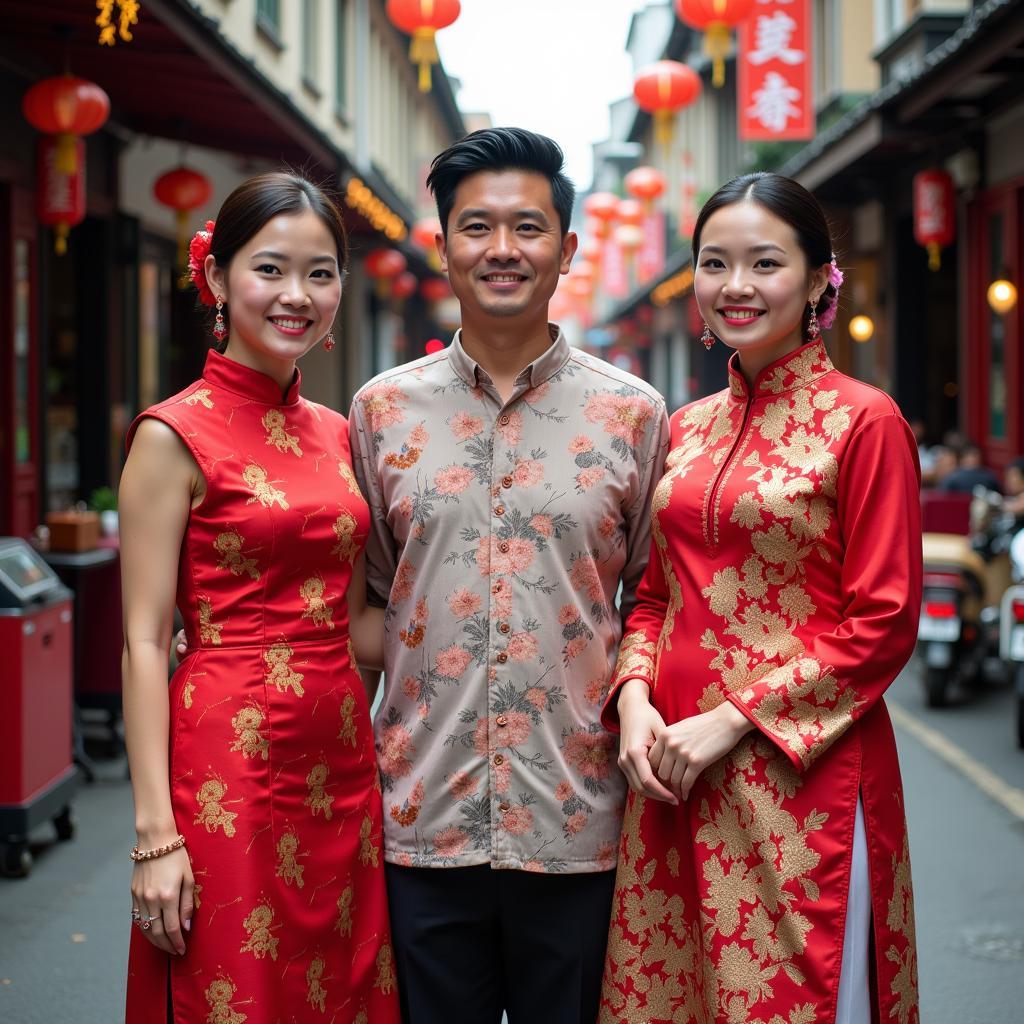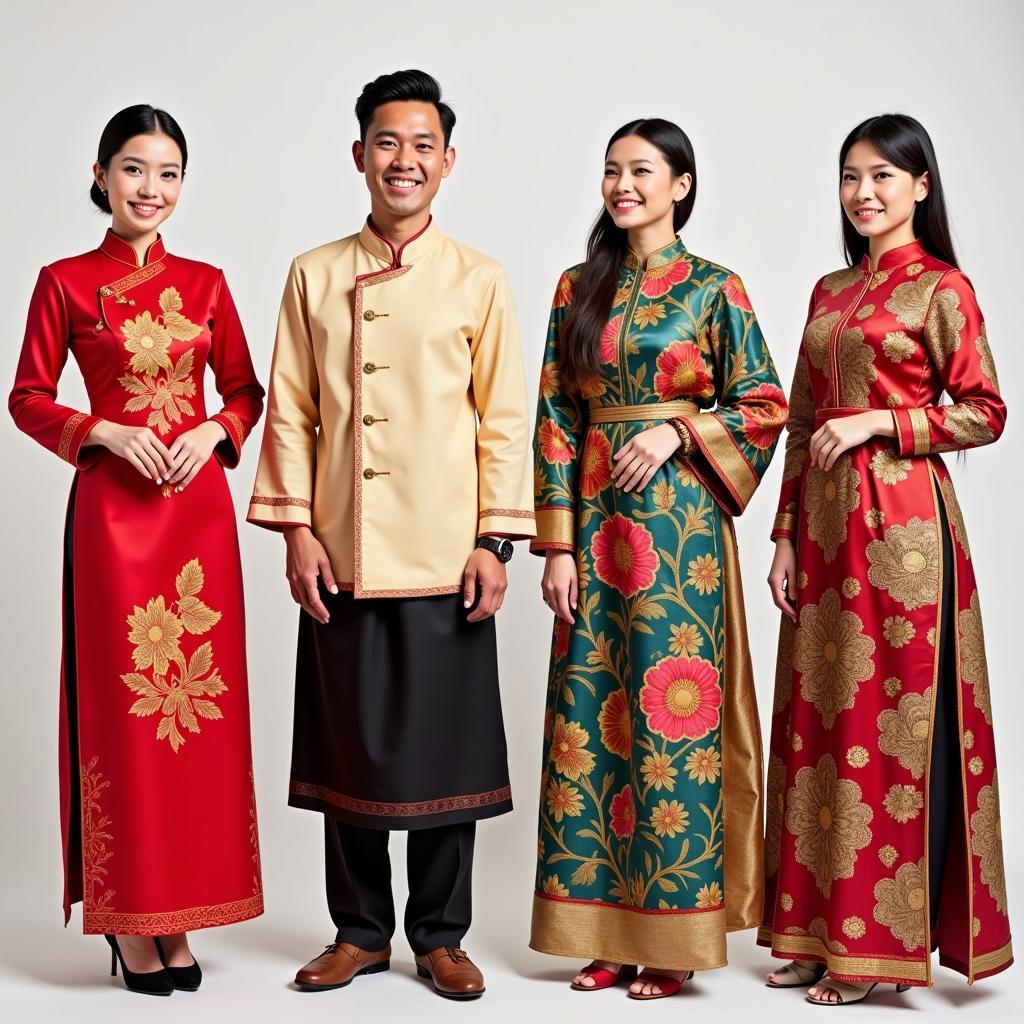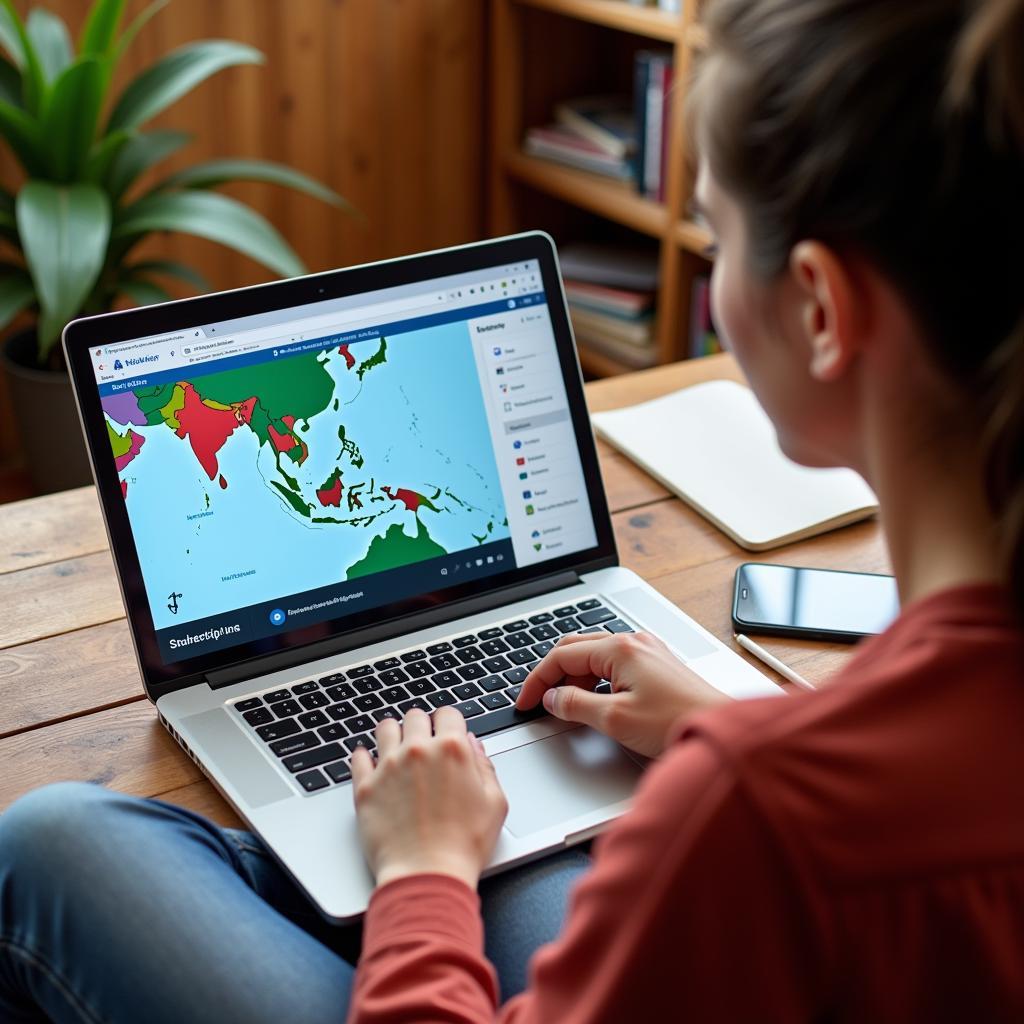Singapore, a vibrant hub of Southeast Asian culture, offers a fascinating glimpse into the world of ASEAN attire. From traditional garments reflecting the nation’s rich heritage to modern interpretations of classic styles, exploring ASEAN attire in Singapore is a journey through the diverse tapestry of the region. This article delves into the unique characteristics of Singaporean fashion, highlighting its influences and showcasing the diverse options available for those seeking to embrace the beauty of ASEAN style.
A Fusion of Cultures: Understanding Singaporean Attire
Singaporean fashion is a unique blend of various cultural influences, reflecting the country’s diverse ethnic makeup. Malay, Chinese, Indian, and Peranakan traditions all contribute to the rich tapestry of Singaporean style. This fusion creates a vibrant and dynamic fashion scene that embraces both traditional garments and modern interpretations, offering a diverse range of options for every taste. Want to learn more about ASEAN beauty trends in general? Check out our article on ASEAN beauty.
Traditional Garments: A Window into the Past
Traditional attire in Singapore offers a captivating glimpse into the nation’s history and cultural heritage. The baju kurung, a traditional Malay outfit, is a popular choice for formal occasions, characterized by its elegant long tunic and matching skirt. The cheongsam, a figure-hugging Chinese dress, showcases the elegance and sophistication of Chinese culture. Indian attire, with its vibrant colors and intricate embroidery, adds another layer of richness to Singapore’s fashion landscape. Meanwhile, the Peranakan kebaya, a delicate blouse worn with a sarong, represents the unique cultural blend of Chinese and Malay influences.
 Singaporean Traditional Attire Showcase
Singaporean Traditional Attire Showcase
Modern Interpretations: Embracing Contemporary Style
While traditional garments hold a special place in Singaporean fashion, modern interpretations of these classic styles are gaining popularity. Designers are incorporating traditional elements into contemporary designs, creating unique and stylish pieces that appeal to a younger generation. This blending of tradition and modernity results in a fashion scene that is both vibrant and evolving, reflecting the dynamic nature of Singaporean society. You can find opportunities related to ASEAN fashion at the ASEAN Career Fair Singapore.
Where to Find ASEAN Attire in Singapore
Singapore offers a wide range of options for those seeking to explore and embrace ASEAN attire. From bustling street markets to high-end boutiques, there’s something for every budget and taste. Here are some key places to discover the beauty of ASEAN fashion:
- Haji Lane: Known for its trendy boutiques and independent designers, Haji Lane is a treasure trove of unique and stylish clothing, including modern interpretations of traditional ASEAN attire.
- Bugis Street Market: This bustling market offers a wide variety of affordable clothing options, including traditional garments and contemporary styles.
- Design Orchard: This retail space showcases the work of local Singaporean designers, offering a curated selection of high-quality and innovative fashion pieces.
- Online platforms: Numerous online platforms specialize in ASEAN fashion, offering a convenient way to browse and purchase a wide range of clothing from different Southeast Asian countries.
 Shopping for ASEAN Attire in Singapore
Shopping for ASEAN Attire in Singapore
What are some popular ASEAN attire options in Singapore?
The Baju Kurung, Cheongsam, Saree, and Kebaya are some of the most popular choices.
Where can I buy ASEAN attire in Singapore?
You can find ASEAN attire in various places, including Haji Lane, Bugis Street Market, Design Orchard, and online platforms.
“Singapore’s fashion scene truly embodies the spirit of ASEAN, blending tradition and modernity in a captivating way,” says renowned fashion designer Anya Wijaya. “It’s a melting pot of styles, reflecting the diverse cultures that make up this vibrant nation.”
Exploring ASEAN Attire Beyond Singapore
While Singapore is a great starting point for exploring ASEAN attire, the region offers a wealth of diverse fashion traditions. From the intricate textiles of Indonesia to the vibrant silks of Thailand, each country has its own unique style. Exploring these different fashion cultures provides a deeper understanding of the rich heritage and artistry of Southeast Asia. For more on ASEAN events, consider checking out ASEAN Camp 2018.
 Diverse ASEAN Attire Across the Region
Diverse ASEAN Attire Across the Region
“Fashion is a powerful tool for cultural exchange and understanding,” adds cultural historian Dr. Lee Wei Ming. “By exploring the different attire of ASEAN countries, we can gain a deeper appreciation for the diverse traditions and artistic expressions of the region.”
Conclusion: Embracing the Beauty of ASEAN Attire in Singapore
Singapore offers a vibrant and dynamic fashion landscape that showcases the beauty and diversity of ASEAN attire. From traditional garments to modern interpretations, there’s a wealth of options for those seeking to explore and embrace the rich cultural heritage of Southeast Asia. By immersing yourself in the world of Singaporean fashion, you’ll gain a deeper understanding of the region’s vibrant tapestry of cultures and traditions. Exploring Asean Attire Singapore is a must for anyone interested in fashion and Southeast Asian culture. Learn more about traditional costumes across Southeast Asia by exploring ASEA costume.
FAQ
- What is the significance of traditional attire in Singapore?
- Where can I find affordable ASEAN attire in Singapore?
- Are there any online platforms that sell ASEAN attire?
- How has modern fashion influenced traditional attire in Singapore?
- What are some tips for choosing the right ASEAN attire for different occasions?
- How can I learn more about the history and cultural significance of different ASEAN attire?
- Where can I find tailors who specialize in traditional ASEAN attire in Singapore?
For further information on airport codes within the ASEAN region, you can also visit our ASE airport wiki.
Need assistance? Contact us 24/7: Phone: 0369020373, Email: [email protected], or visit us at Ngoc Lien Village, Hiep Hoa, Bac Giang, Vietnam.


